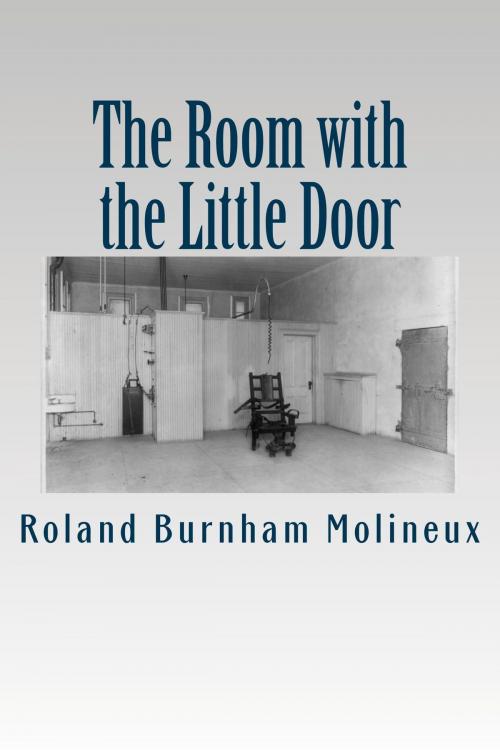The Room with the Little Door (Illustrated Edition)
Nonfiction, Family & Relationships, Biography & Memoir| Author: | Roland Burnham Molineux | ISBN: | 1230001388787 |
| Publisher: | Steve Gabany | Publication: | October 17, 2016 |
| Imprint: | Language: | English |
| Author: | Roland Burnham Molineux |
| ISBN: | 1230001388787 |
| Publisher: | Steve Gabany |
| Publication: | October 17, 2016 |
| Imprint: | |
| Language: | English |
This is a 1903 account of a man from New York City's high society who was accused of murder and spent four years in the notorious Tombs Prison in New York City and on Death Row in Sing Sing Prison in New York. It is a story told simply, clearly; the reader can easily picture her/himself in prison.
Molineux's first trial guilty verdict led to the sentence of death by electrocution, which was overturned on appeal. He was retried and found not guilty.
Roland Molineux's acquittal was the result of the New York courts enforcing more stringent limitations on the admissibility of evidence in criminal cases, which provided increased protection for the rights of defendants.
This edition of the book contains 11 classic illustrations of Tombs and Sing Sing prison, including the Death Chamber at Sing Sing which are unique to this edition of the book.
Roland Molineux was born into a distinguished family which had become rich in the chemical dye business. Molineux's father had been a Union general in the Civil War, and Molineux was raised in the upper crust of New York society. Molineux was a handsome, muscular man who had developed a reputation as a playboy and as a snob by the time he was 30.
Molineux was extremely vain about his athletic prowess, and he belonged to the Knickerbocker Athletic Club, whose membership came exclusively from wealthy and old-line New York families. He was such a snob that he repeatedly went to the club's management to demand that people he considered socially inferior be expelled. In 1898 he also began to compete with one Henry Barnet for the affections of a young and beautiful woman named Blanche Cheeseborough.
In November, Barnet received a package in the mail containing some over-the-counter stomach medicine produced by a well-known drug company. He assumed that it was a free sample, but when he took some, he became violently sick and later died. Less than two weeks after Barner's death, Molineux married Blanche Cheeseborough. Despite the suspicious circumstances, there were no charges against Molineux. Then, in December 1898, Molineux had a confrontation with Harry Cornish, the Knickerbocker Athletic Club's athletic director. Cornish beat Molineux in a weight-lifting competition, and in a fit of pique, Molineux demanded that the club expel Cornish. The management refused.
In late December, Cornish received a bottle containing a popular liquid headache medicine. He gave it to his aunt, Katharine Adams, who took some on December 28 and died after a bout of violent convulsions. This time, the authorities and the club performed a thorough investigation and discovered that the bottle contained cyanide, which had killed Adams. The police uncovered some letters to various drug companies, written by the murderer to obtain medicines and poisons, which bore Barnet's and Cornish's forged signatures. The handwriting was very similar to Molineux's, and so the police charged Molineux with murder.
This is a 1903 account of a man from New York City's high society who was accused of murder and spent four years in the notorious Tombs Prison in New York City and on Death Row in Sing Sing Prison in New York. It is a story told simply, clearly; the reader can easily picture her/himself in prison.
Molineux's first trial guilty verdict led to the sentence of death by electrocution, which was overturned on appeal. He was retried and found not guilty.
Roland Molineux's acquittal was the result of the New York courts enforcing more stringent limitations on the admissibility of evidence in criminal cases, which provided increased protection for the rights of defendants.
This edition of the book contains 11 classic illustrations of Tombs and Sing Sing prison, including the Death Chamber at Sing Sing which are unique to this edition of the book.
Roland Molineux was born into a distinguished family which had become rich in the chemical dye business. Molineux's father had been a Union general in the Civil War, and Molineux was raised in the upper crust of New York society. Molineux was a handsome, muscular man who had developed a reputation as a playboy and as a snob by the time he was 30.
Molineux was extremely vain about his athletic prowess, and he belonged to the Knickerbocker Athletic Club, whose membership came exclusively from wealthy and old-line New York families. He was such a snob that he repeatedly went to the club's management to demand that people he considered socially inferior be expelled. In 1898 he also began to compete with one Henry Barnet for the affections of a young and beautiful woman named Blanche Cheeseborough.
In November, Barnet received a package in the mail containing some over-the-counter stomach medicine produced by a well-known drug company. He assumed that it was a free sample, but when he took some, he became violently sick and later died. Less than two weeks after Barner's death, Molineux married Blanche Cheeseborough. Despite the suspicious circumstances, there were no charges against Molineux. Then, in December 1898, Molineux had a confrontation with Harry Cornish, the Knickerbocker Athletic Club's athletic director. Cornish beat Molineux in a weight-lifting competition, and in a fit of pique, Molineux demanded that the club expel Cornish. The management refused.
In late December, Cornish received a bottle containing a popular liquid headache medicine. He gave it to his aunt, Katharine Adams, who took some on December 28 and died after a bout of violent convulsions. This time, the authorities and the club performed a thorough investigation and discovered that the bottle contained cyanide, which had killed Adams. The police uncovered some letters to various drug companies, written by the murderer to obtain medicines and poisons, which bore Barnet's and Cornish's forged signatures. The handwriting was very similar to Molineux's, and so the police charged Molineux with murder.















